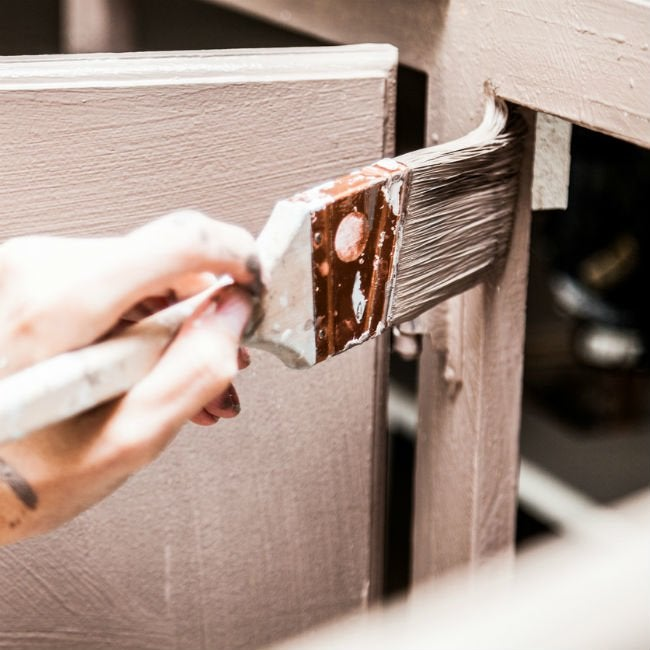When painting over oil-based paint, the following tips can help prevent cracking and peeling.
Q: I want to repaint my kitchen cabinets that have been installed with oil-based paint. Or can I use leftover water-based paint from another job?
A: The premise is correct, and it is generally best to use more oil-based paint, either an alkyd (made with a synthetic resin binder) or a natural oil (such as linseed) formulation, to refresh a surface that has been painted with an oil-based paint. Using water-based or acrylic paints over oil-based paints is incompatible with the natural glossy surface of oil-based paints and can lead to flaking and chipping.
However, water-based paints have a lower VOC content (and less odor), shorter drying time, and are more resistant to sunlight-induced discoloration, so there is a simple reason to want to use water-based paints. Fortunately, with the right approach, it is possible to successfully use water-based coatings in place of oil-based coatings. This page provides a guide to using oil-based paints.

Using oil-based paint over oil-based paint.
- Use any type of oil-based paint to apply cured oil-based paint. If the oil-based paint (alkyd or natural oil-based) is fully cured, it can be reapplied with an alkyd or natural oil-based paint. An oil-based paint is considered fully cured when it has cured to the point where it can be wiped off without affecting the finish, which may take 7-30 days.
- However, do not use alkyd resins over uncured layers of natural oil-based paint. When dealing with uncured natural oil-based lacquer, only recoat with natural oil-based lacquer. If an alkyd is used, the underlying natural oil-based paint will continue to cure after the alkyd has cured, causing the top coat to crack. On the other hand, alkyd and natural oil-based paints that have not yet cured can be used safely without fear of cracking the topcoat.
Using water-based paints over oil-based paints
- Before applying water-based paint over oil-based paint, remove the gloss. Water-based paints do not bond well with the surface sheen of oil-based paints, so remove as much of the surface sheen as possible before repainting. Polish the entire surface with fine grit sandpaper (180-220 grit). Do not remove all the paint, just sand until the surface is flat and smooth. Then wipe the surface with a tack cloth to absorb any sanding dust.
- Deep clean with TSP before applying water-based paint over oil-based paint. After sanding, drive away any dirt and dust from the surface of the oil-based paint, which will also reduce the adhesion of the water-based paint. Wearing gloves and safety glasses, put 1/4 cup of trisodium phosphate (TSP) into a large bucket and dilute with 1 gallon of warm water. Soak a soft sponge in the TSP solution and gently squeeze and wipe off any dirt, debris or dust from the sanded surface. Wipe the cleaned surface again with the water-soaked sponge and allow it to dry naturally.
- When using water-based paint over oil-based paint, be sure to apply a primer. To prevent flaking and chipping during the drying and curing stages, use an adhesive primer formulated to bond glossy or other difficult surfaces over old oil-based paint for optimal paint adhesion. Apply one or two coats over oil or water-based primer and dry according to product instructions. A primer is sufficient if previous paint color, stains or other surface defects are no longer evident.
- Apply two or more coats of waterborne paint over oil-based paint. Using a brush, roller or sprayer, apply at least two coats of a high-quality water-based latex or acrylic paint (such as Glidden Premium, available at Home Depot), allowing it to dry thoroughly between coats of primer, according to product instructions. If you are painting interior fixtures (such as kitchen cabinets), choose a paint labeled “Interior”. Paints labeled “interior/exterior” are suitable for painting exterior walls (such as front doors) because they are resistant to rot and extreme weather conditions. When painting trim such as moldings, choose complementary colors and semi-gloss sheens to emphasize trim details.










